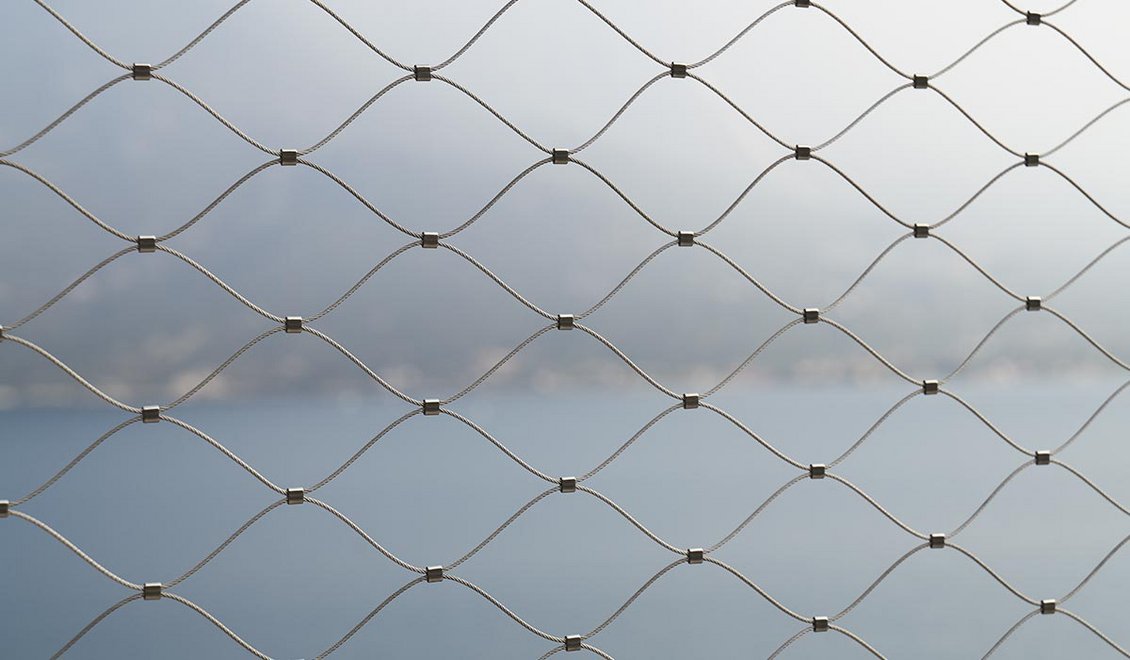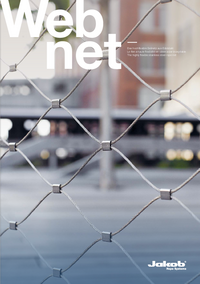
Webnet vs. Chain Link Mesh
At a first glance, Webnet looks not very different from a common chain link mesh. A closer look reveals how wire rope meshes differ from chain link meshes.
The similarities between wire meshes like Webnet and chain link meshes are often a source of confusion for contractors and architects. This is understandable, since Webnet is a technological successor to the common chain link. In fact, wire rope meshes differ in several key aspects from chain link mesh and offer decisive advantages.
The central differences lie in the material and the construction methods of both net types. Webnet consists of stainless steel wire ropes that are woven into each other or joined by sleeves. Chain links, on the other hand, consist of standard steel wires that are bent and hooked into each other.
This has serious consequences for the stability and flexibility of the net types. Whereas Webnet’s stability and flexibility render it suitable for a wide range of applications, chain link is mostly restricted to fencing.
Let’s consider the differences between the meshes in greater detail. We compare Webnet with common chain link regarding five aspects:
- stability
- flexibility
- customization
- security
- aesthetics
Webnet

Chain link mesh

Stability
Webnet is an extremely strong mesh. Besides the material stainless steel, the firmly joined wire ropes provide stability. The mesh is dimensionally stable, meaning that loads on the net structure cannot permanently deform the net. Accordingly, Webnet can be used as a static element that carries loads. This is especially useful for architectural and safety applications. Finally, stainless steel is a virtually maintenance free material.
Chain link meshes consist of bent steel wires that are loosely hooked into each other. They offer no tensile resistance: heavy loads can bend the wires and create bulges. Fences that regularly suffer impacts often look worn out after a couple of years. The loose connection of the wires means also that chain link meshes cannot carry loads.
Flexibility
Next to its stability, flexiblity is Webnet’s greatest feature. The net can take almost any shape and can be formed in all three dimensions. Net stability and stiffness can be adjusted by tensioning the net. With Webnet, three-dimensional net structures and non-rectangular shapes are possible.
Chain link meshes are inflexible structures. Their stiffness and elasticity cannot be influenced by tensioning.

Customization
Webnet offers a wide choice of wire rope diameters and mesh apertures. The net can be customized to the current use case as required. There are almost no limits in height and length of the mesh. With spectral coloring and other color options, Webnet can be made to blend into the environment or stand out as a striking design feature.
Chain link meshes usually come with a very limited choice of diameters. The mesh aperture of the net structure is fixed and cannot be customised. Meshes are fabricated in standard lengths and heights and offer few individual options.
Safety
Stainless steel wires are reliably robust and can carry extreme loads. The firmly connected ropes also ensure that there are no loose wire ends that can cause injuries. With the correct mesh angle, Webnet is also not climbable. In combination with the DIBt homologation as a fall stop net, this guarantees maximum safety
Chain link meshes have a higher risk of cuts and injuries from loose wire ends. Additionally, there is a possibility to hurt fingers at the loose intersection of wires.
Looks and aesthetics
Many architects choose Webnet because of its minimal and unobtrusive look. The stainless steel net looks elegant and can appear almost transparent especially at small cable diameters and wider mesh apertures. Another advantage are the large mesh spans without supporting ropes that are possible by tensioning the nets.
The wire diameters of chain link meshes are usually around 2 mm and thus bigger than the smallest Webnet cable diameters. This makes them clearly visible. Chain link fences also often need horizontal support ropes for tensioning the mesh structure.





Conclusion
The comparison clearly shows that Webnet is suitable for a wider range of applications than chain link meshes. When stability and optics is a key concern, Webnet offers a far wider choice of possibilities. Fall stops, railings, ball catching nets or zoo enclosures are just a few areas where Webnet’s qualities make a difference. For other applications such as simple fences, the common chain link mesh still offers basic functionalities at a good value for money.
If you need further information whether wire meshes are suitable for your project, do not hesitate to contact us.
Downloads

Pliable, transparent grid structures made of stainless steel wire rope. Our Jakob Webnet program presents countless application possibilities.
Download